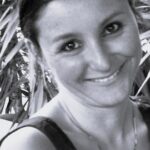Link to Pubmed [PMID] – 33846459
Link to DOI – 10.1038/s41598-021-87024-1
Sci Rep 2021 Apr; 11(1): 7893
APOBEC3 (A3) enzymes are best known for their role as antiviral restriction factors and as mutagens in cancer. Although four of them, A3A, A3B, A3F and A3G, are induced by type-1-interferon (IFN-I), their role in inflammatory conditions is unknown. We thus investigated the expression of A3, and particularly A3A and A3B because of their ability to edit cellular DNA, in Systemic Lupus Erythematosus (SLE), a chronic inflammatory disease characterized by high IFN-α serum levels. In a cohort of 57 SLE patients, A3A and A3B, but also A3C and A3G, were upregulated ~ 10 to 15-fold (> 1000-fold for A3B) compared to healthy controls, particularly in patients with flares and elevated serum IFN-α levels. Hydroxychloroquine, corticosteroids and immunosuppressive treatment did not reverse A3 levels. The A3AΔ3B polymorphism, which potentiates A3A, was detected in 14.9% of patients and in 10% of controls, and was associated with higher A3A mRNA expression. A3A and A3B mRNA levels, but not A3C or A3G, were correlated positively with dsDNA breaks and negatively with lymphopenia. Exposure of SLE PBMCs to IFN-α in culture induced massive and sustained A3A levels by 4 h and led to massive cell death. Furthermore, the rs2853669 A > G polymorphism in the telomerase reverse transcriptase (TERT) promoter, which disrupts an Ets-TCF-binding site and influences certain cancers, was highly prevalent in SLE patients, possibly contributing to lymphopenia. Taken together, these findings suggest that high baseline A3A and A3B levels may contribute to cell frailty, lymphopenia and to the generation of neoantigens in SLE patients. Targeting A3 expression could be a strategy to reverse cell death and the generation of neoantigens.
